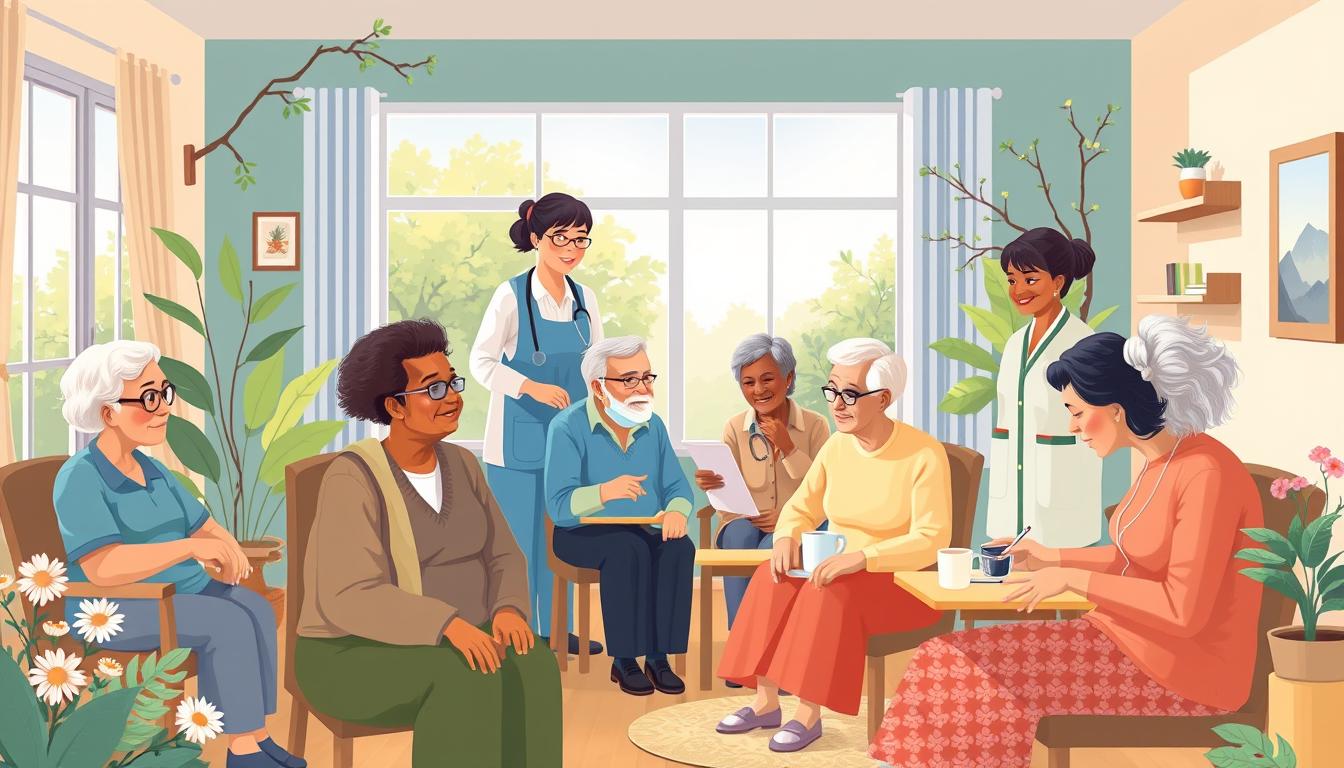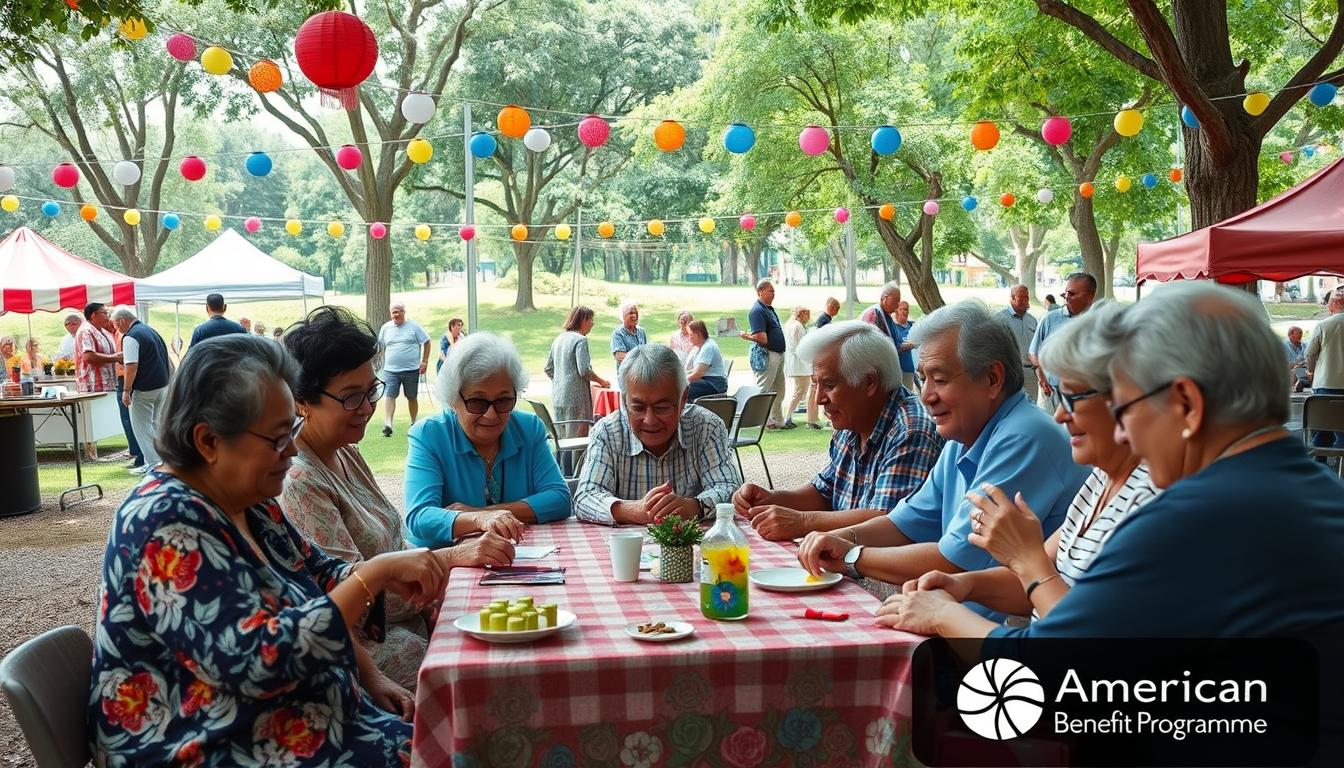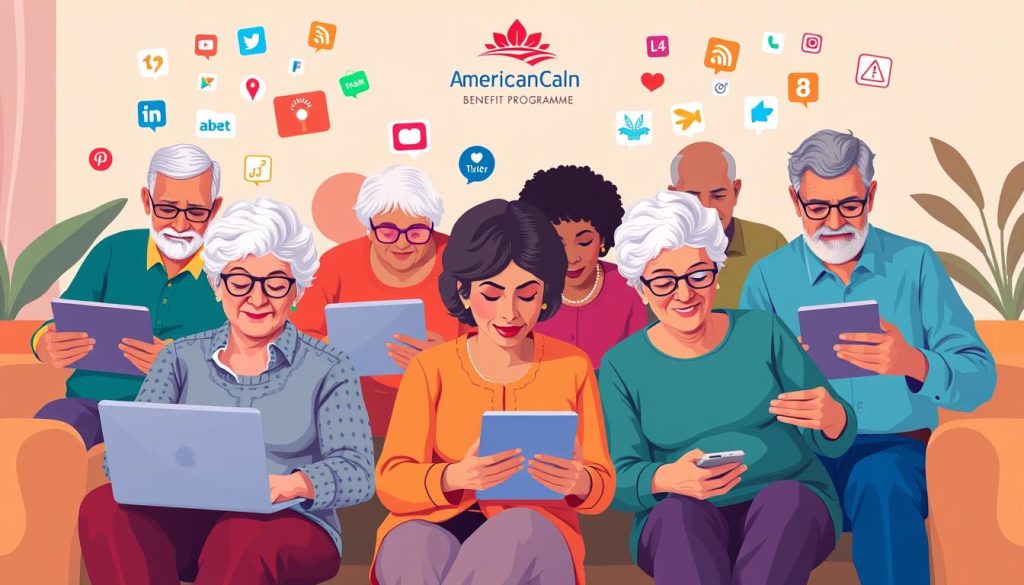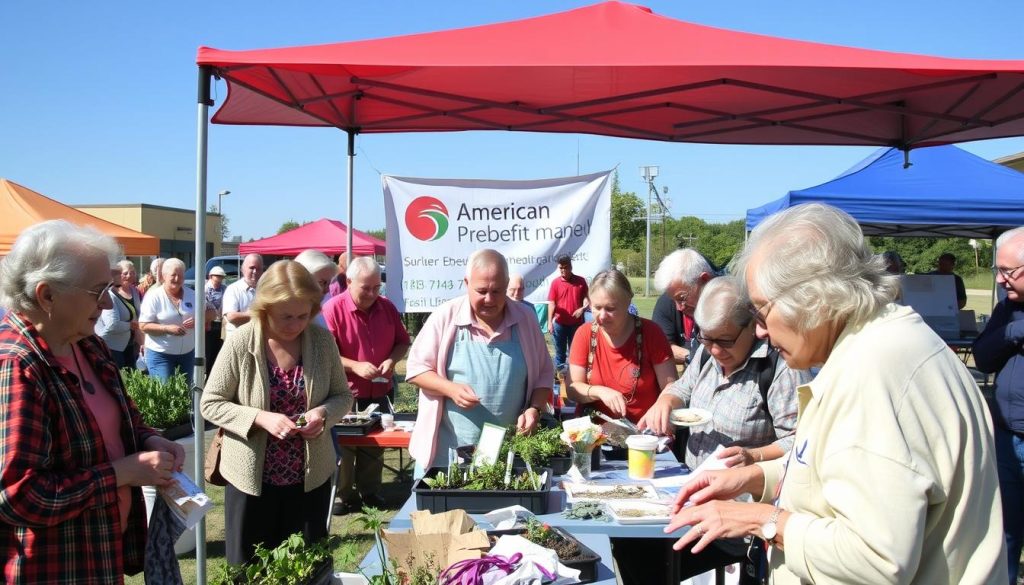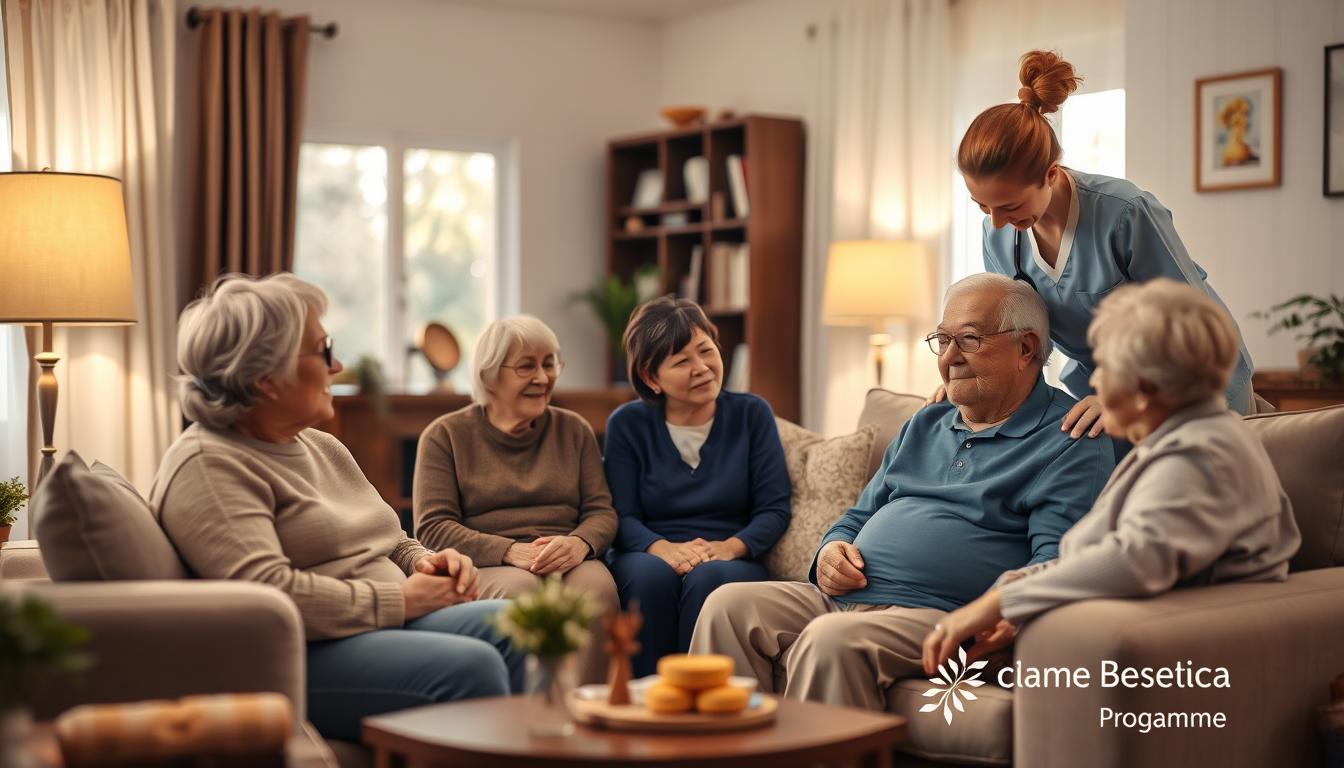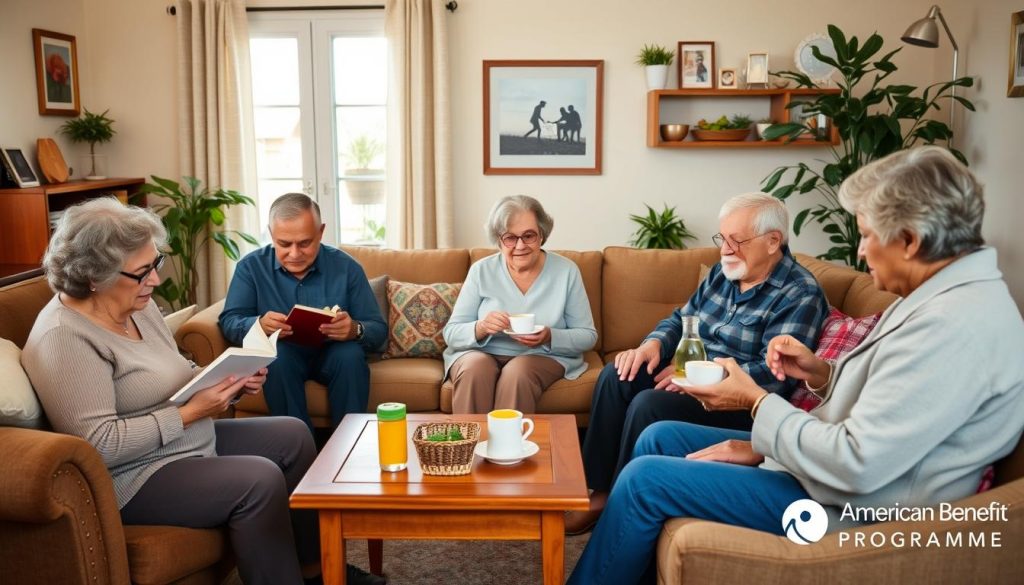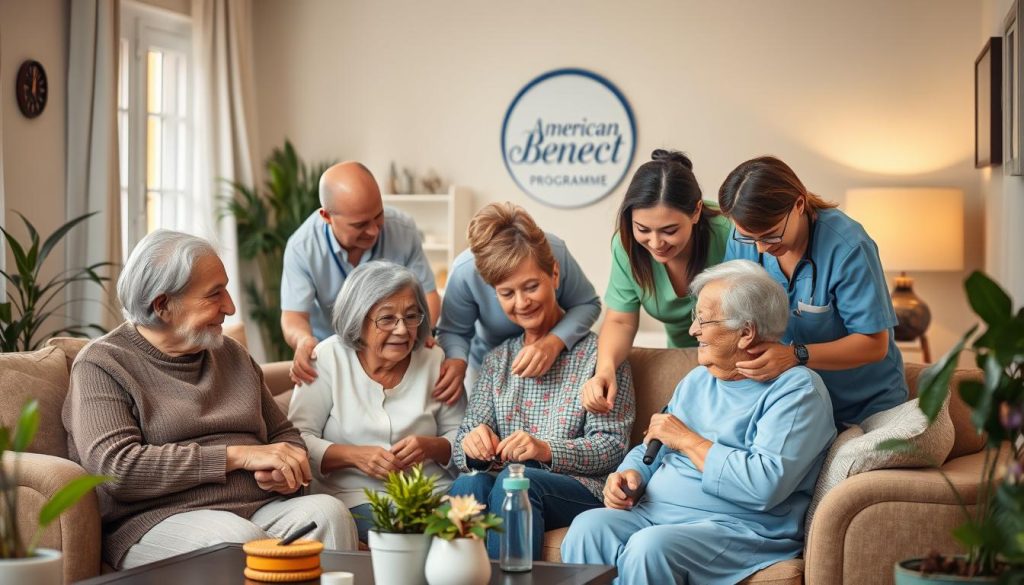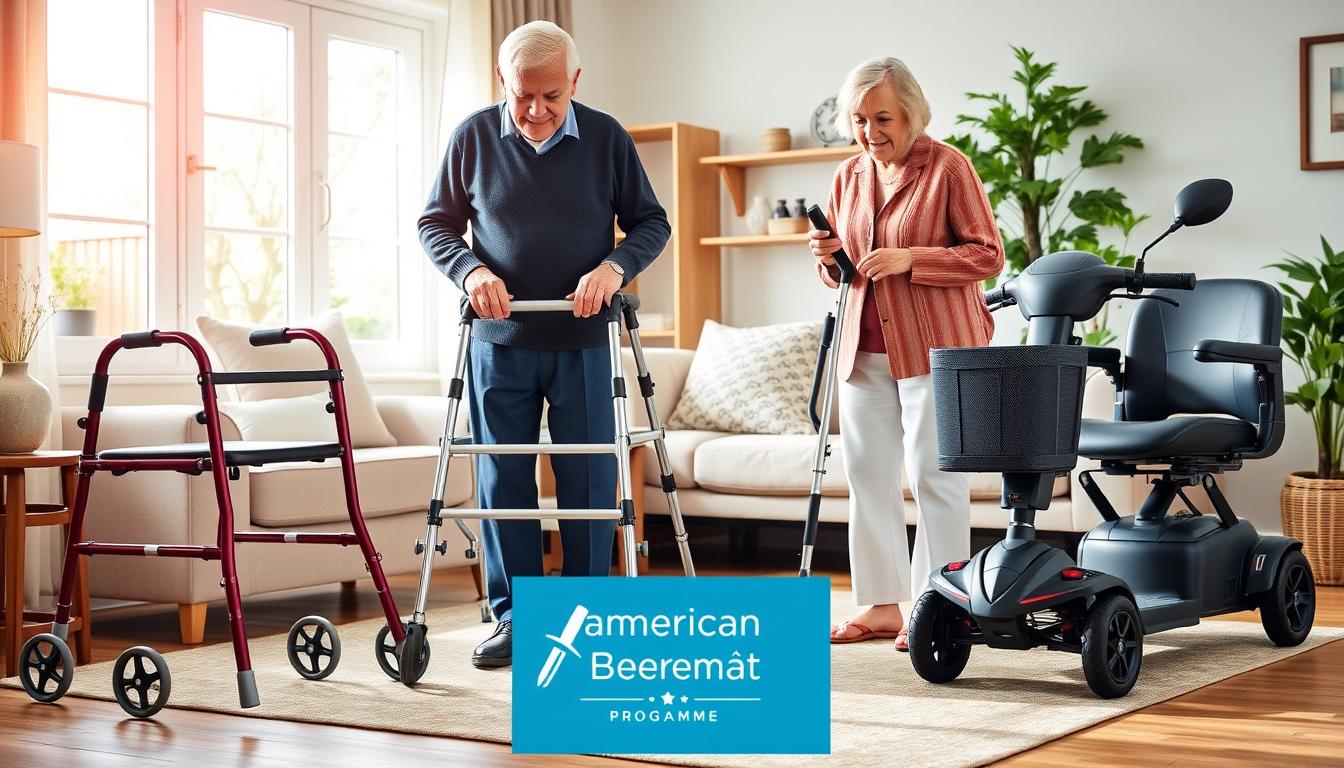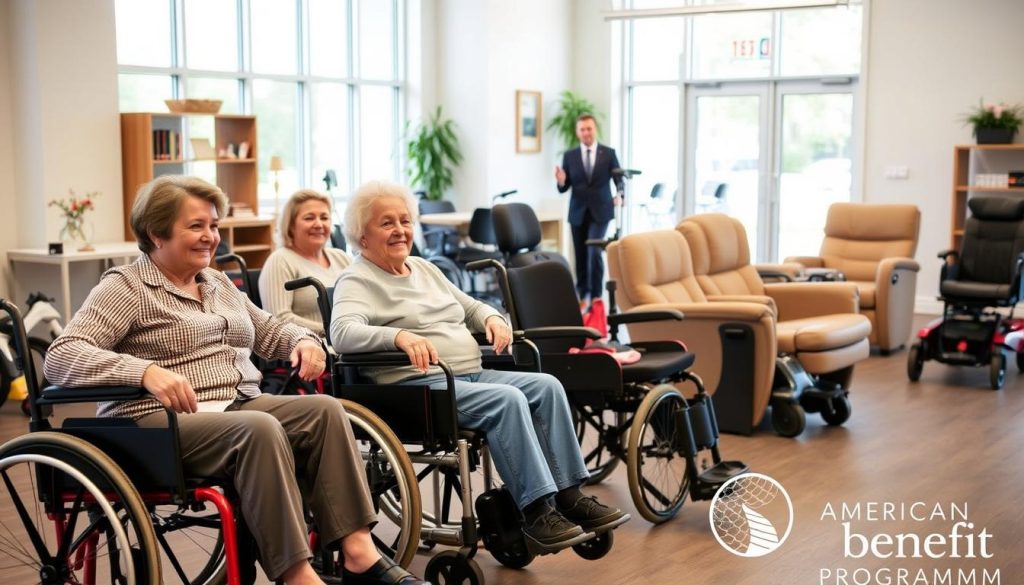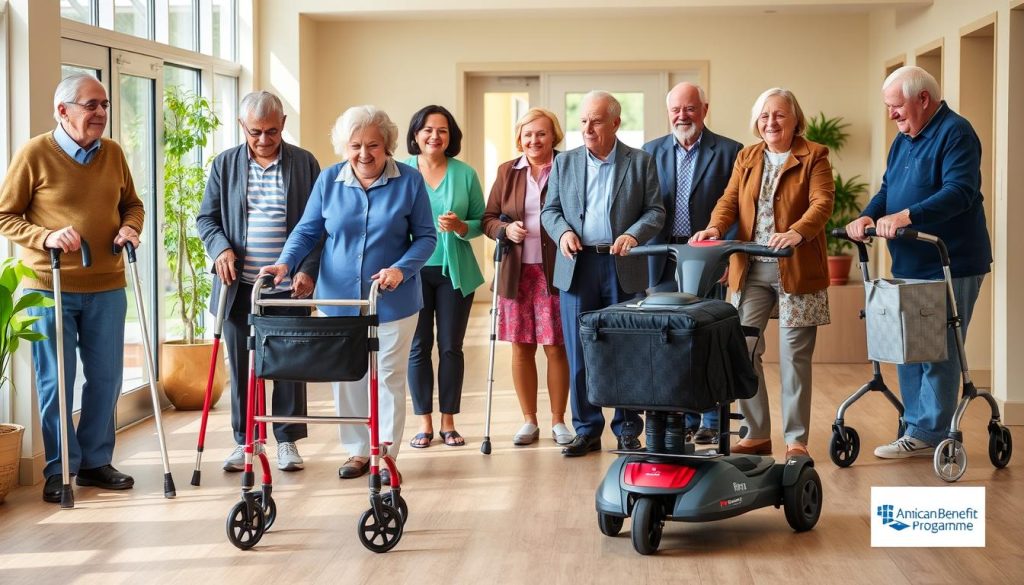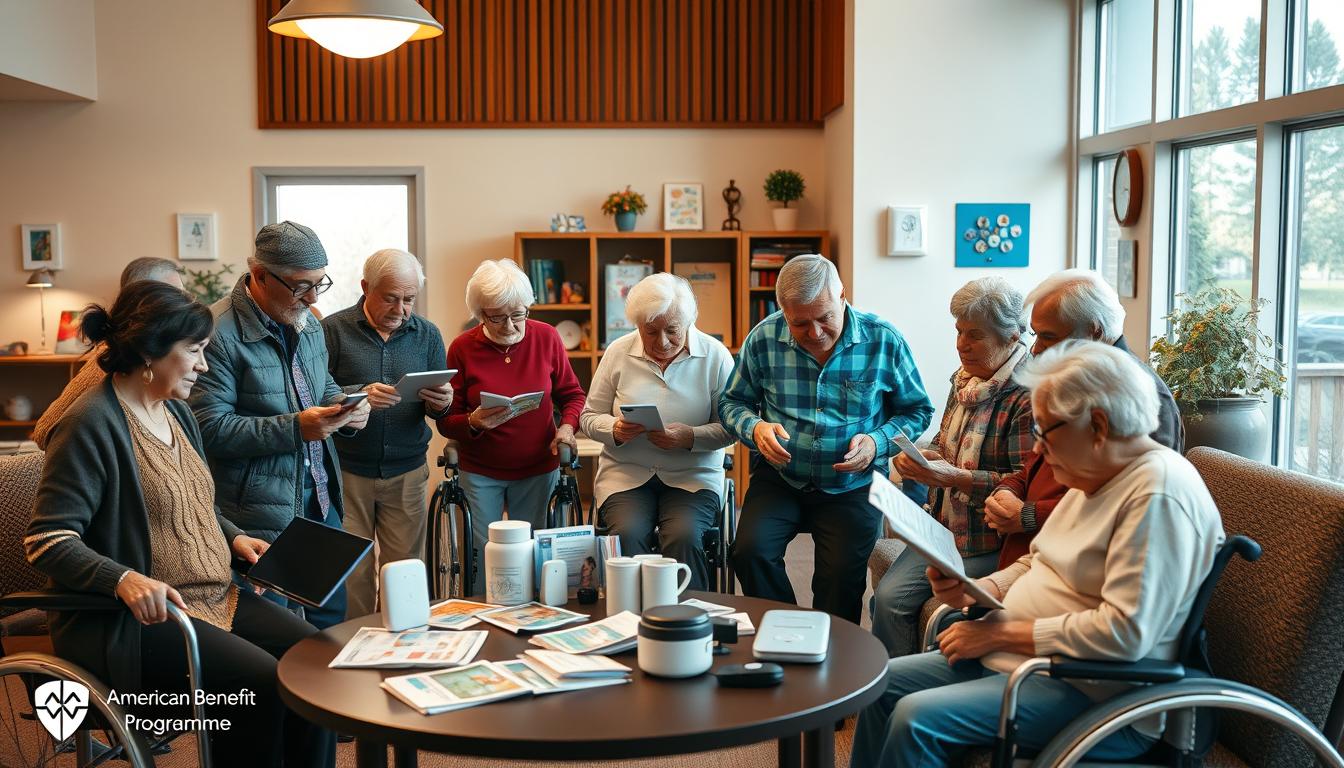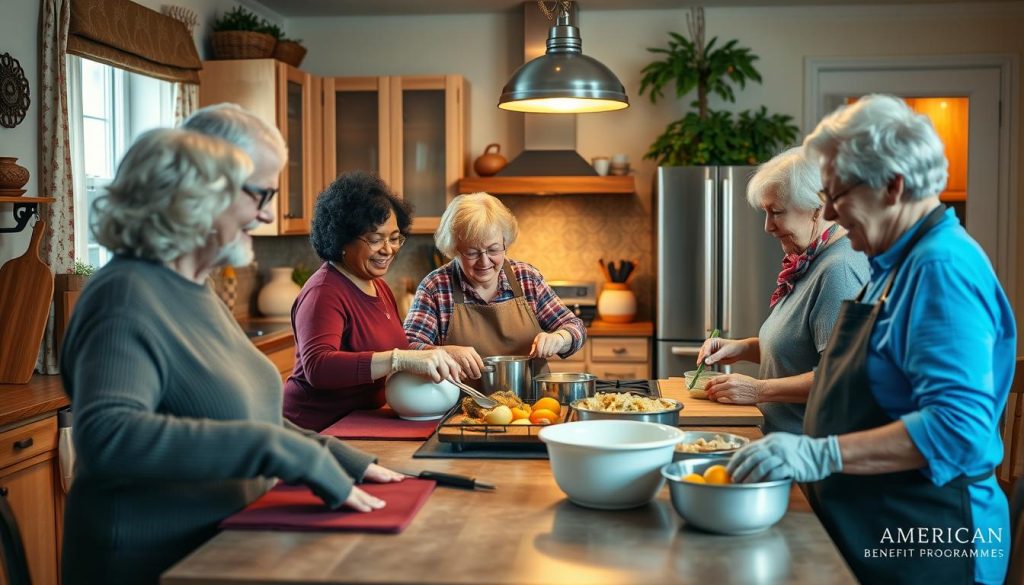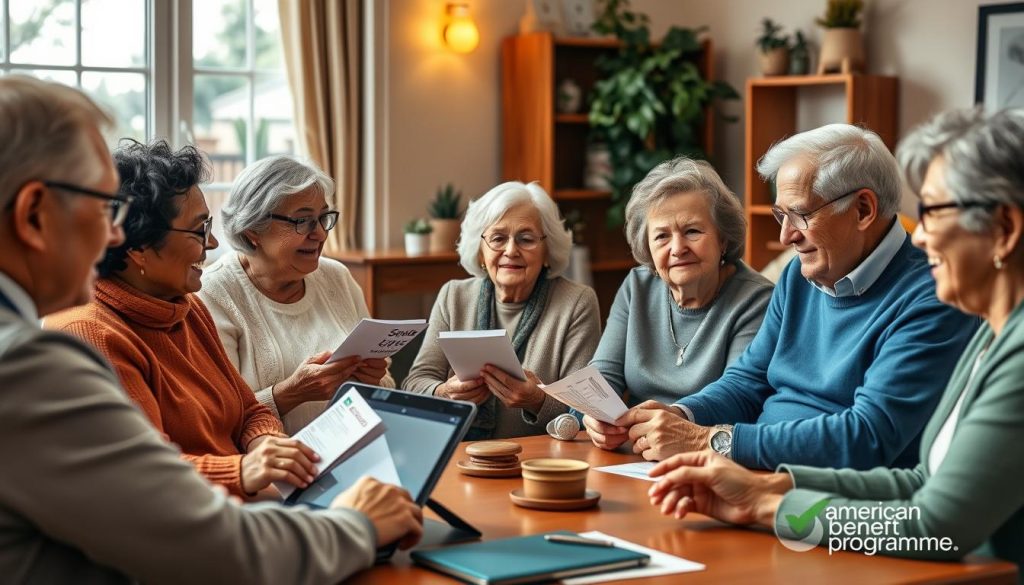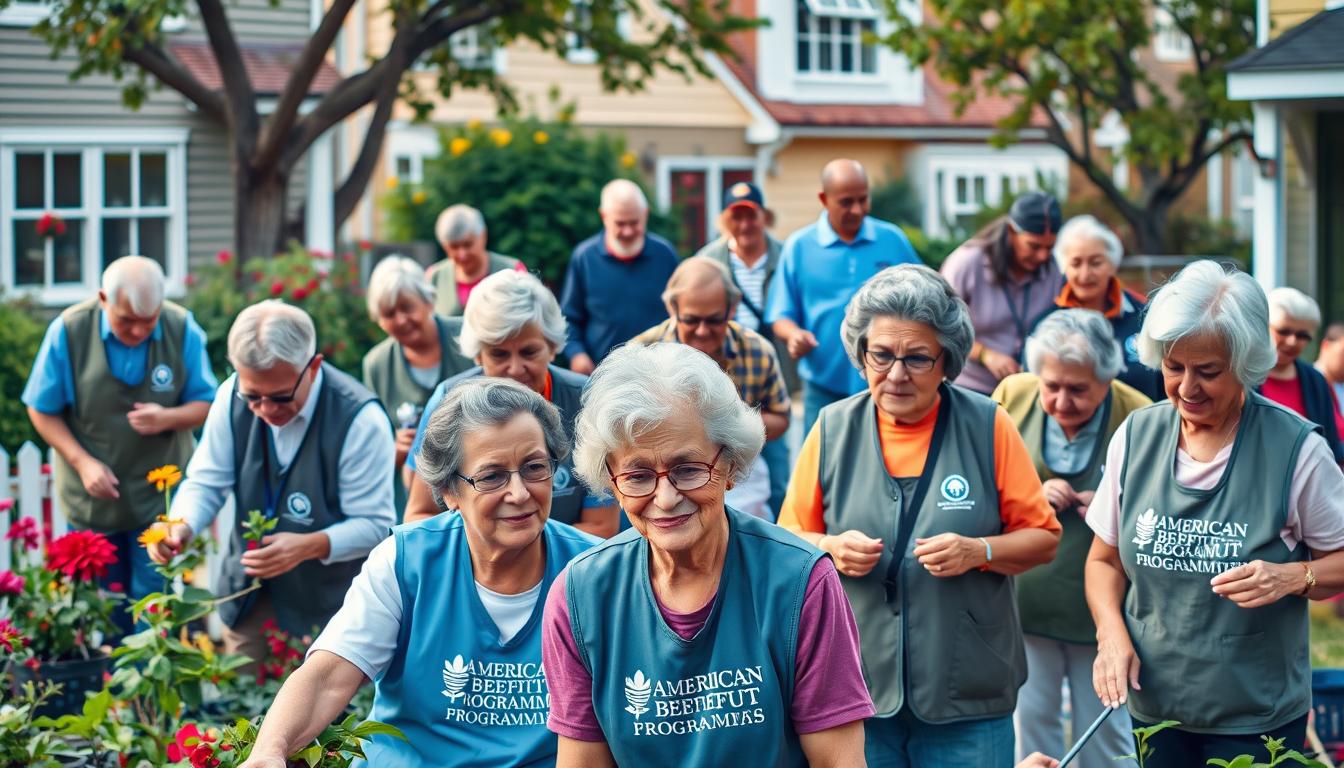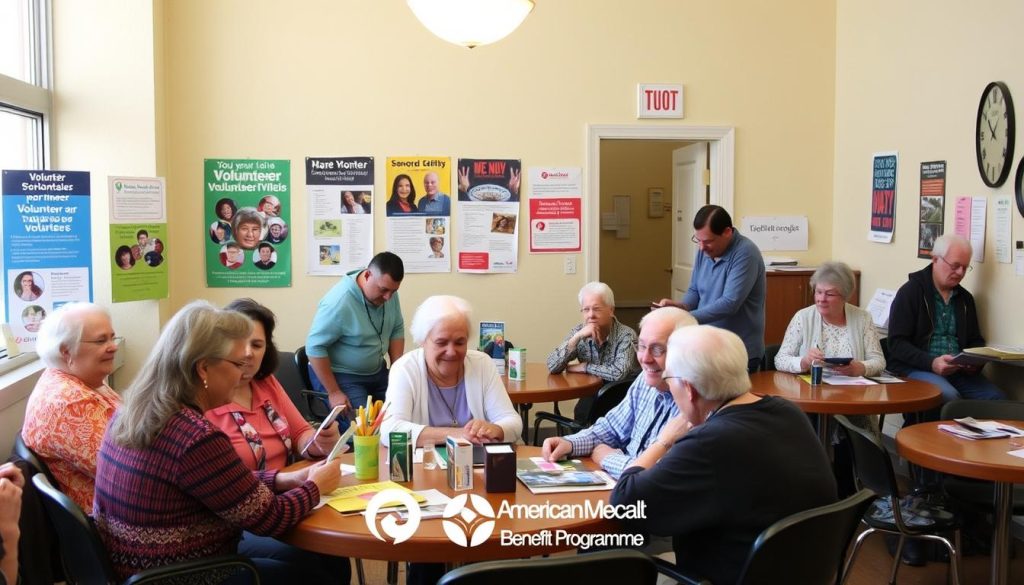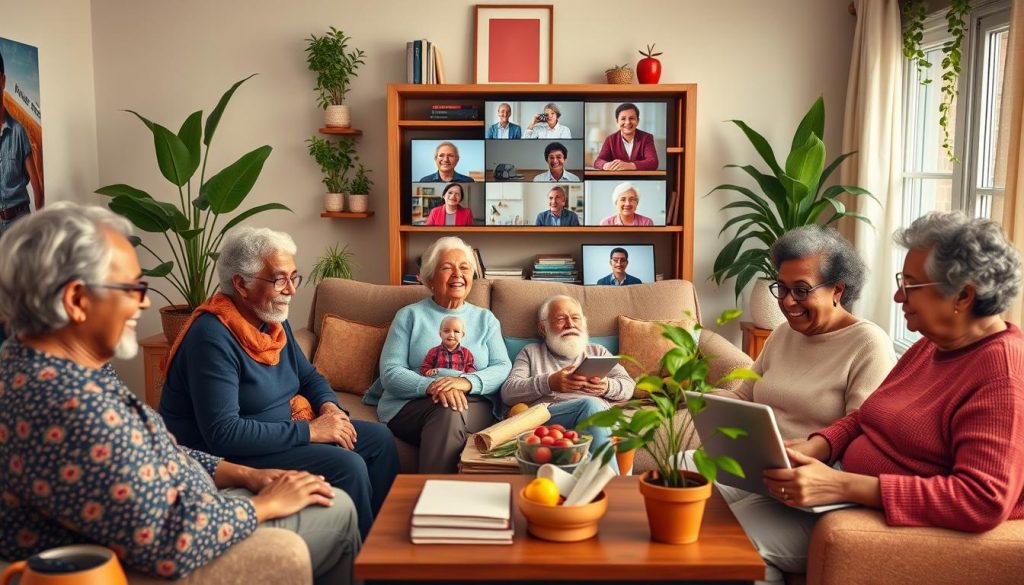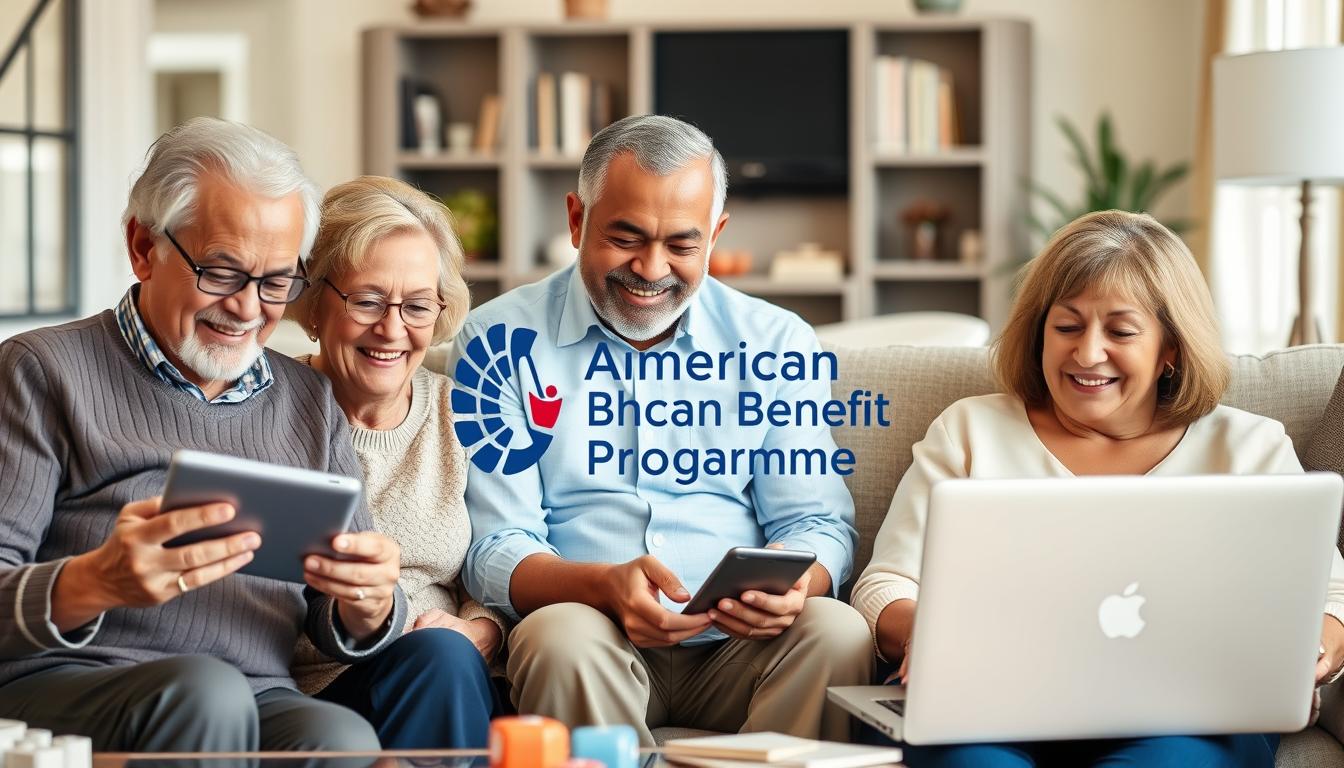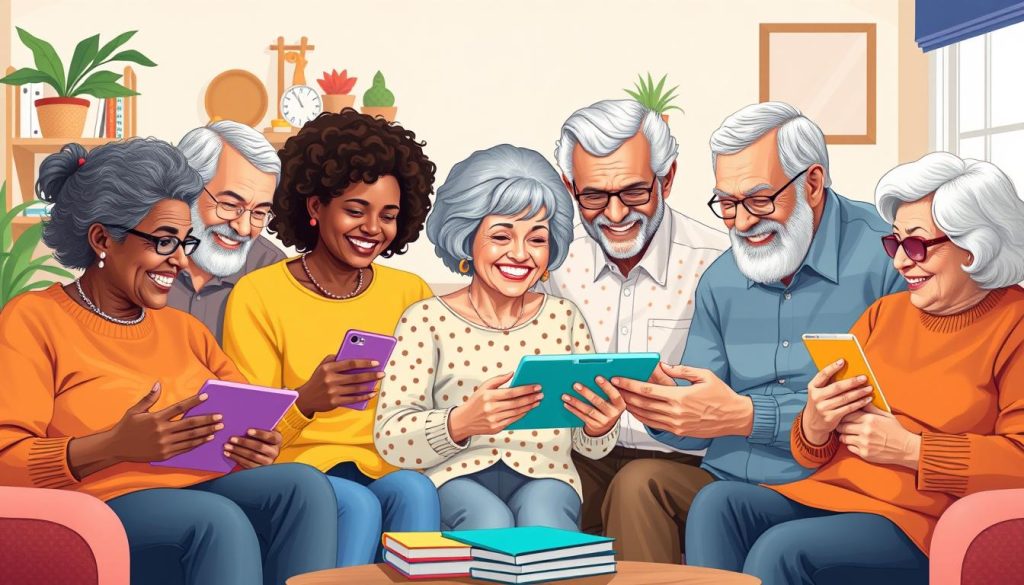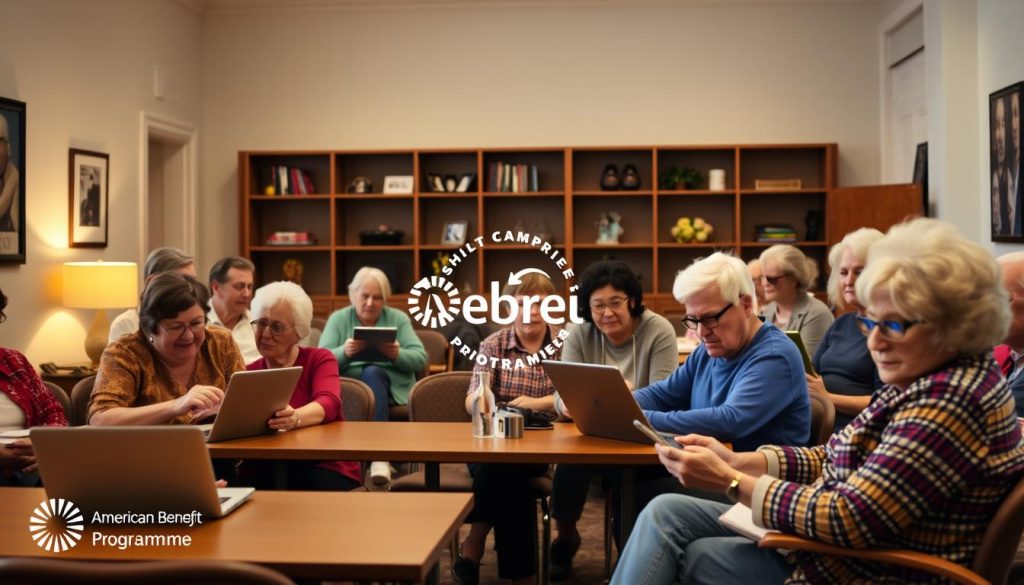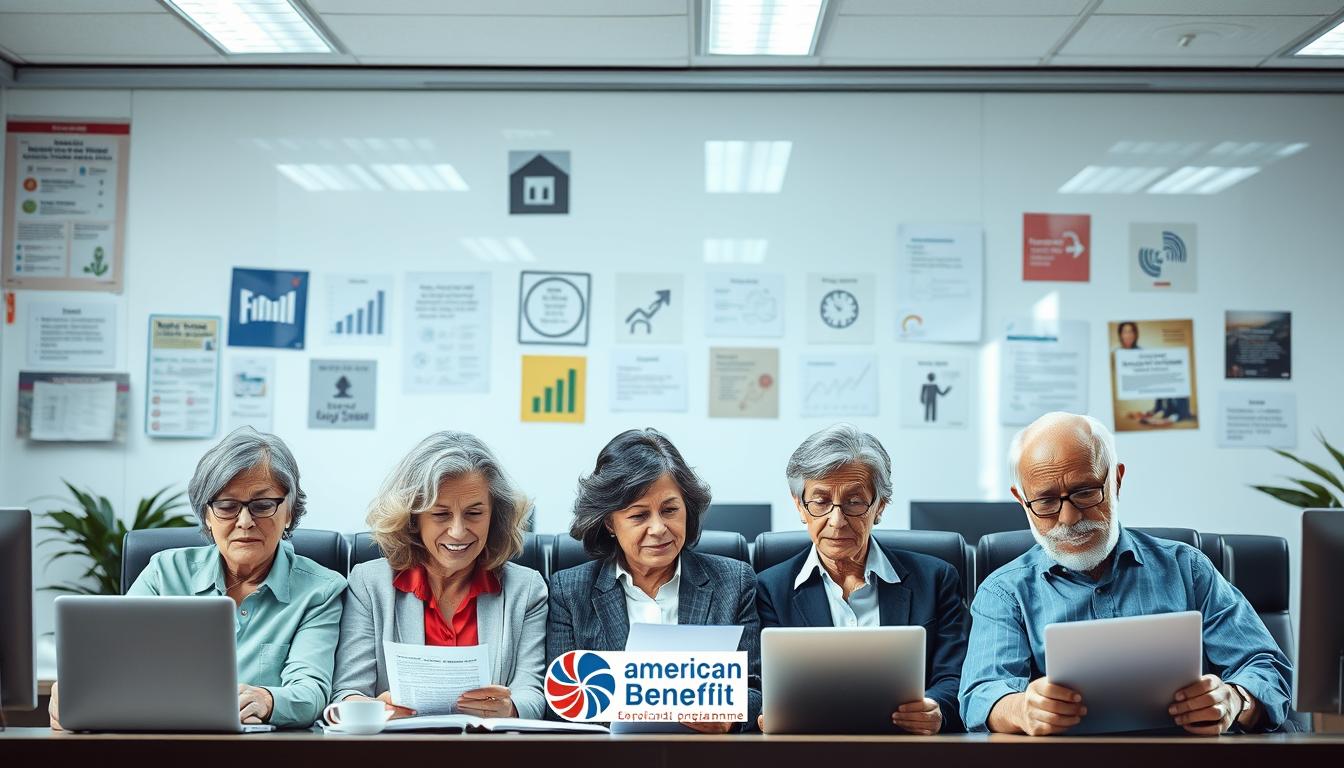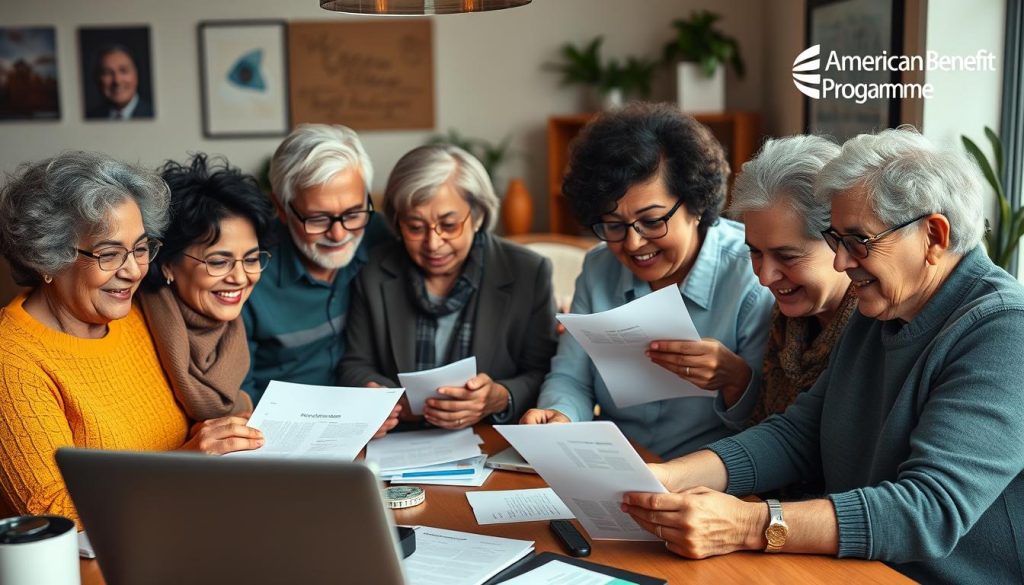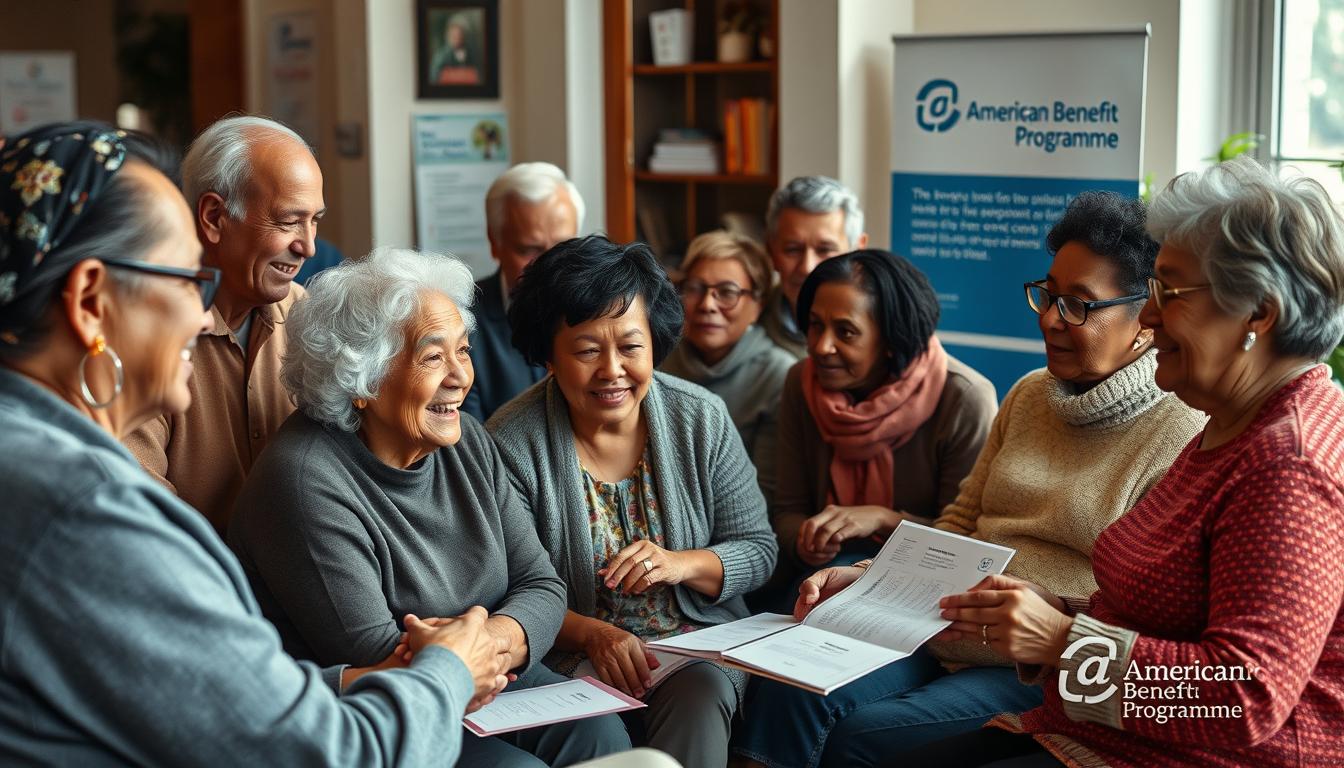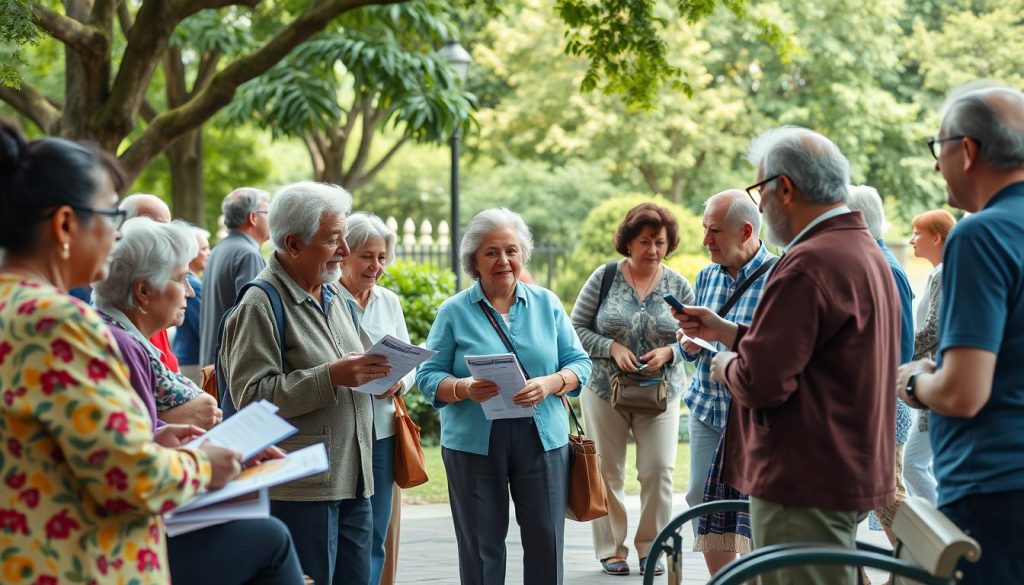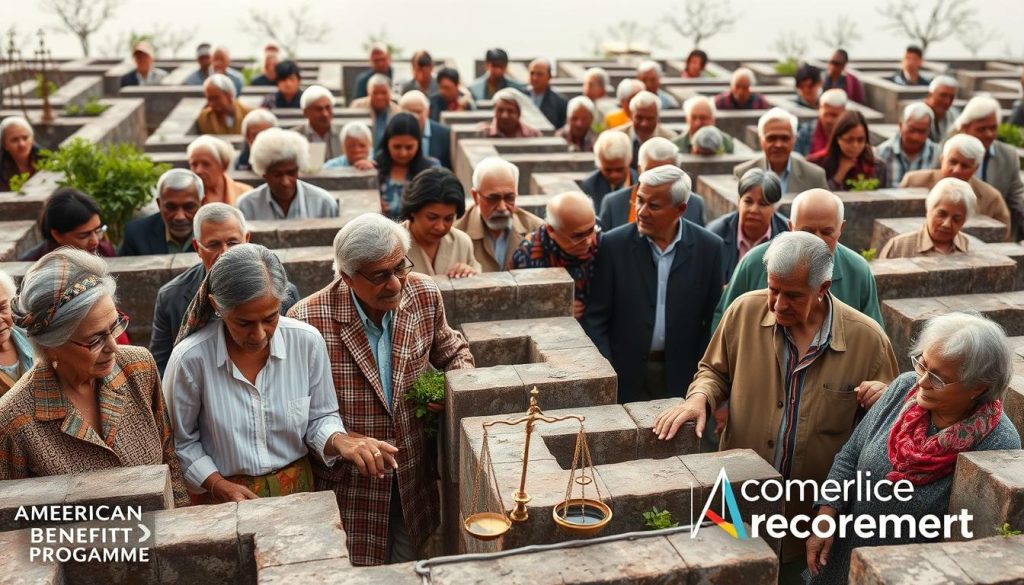Did you know nearly 16 million people help care for those with Alzheimer’s in the US1? This fact shows how important it is for families to find good memory care. Understanding your choices is the first step to helping those we love on this journey.
Here, we’ll talk about why it’s important for memory care places to be certified. We’ll also look at different types of memory care. And we’ll discuss why care that fits each person matters. Almost 60% of caregivers feel very stressed. It’s key to find services that make life better for people with dementia1. With the right info and help, you can find great memory care.
Key Takeaways
- Understanding the unique challenges families face in caring for loved ones with dementia.
- The significance of certification for quality memory care facilities.
- Exploring various memory care options, including assisted living and nursing homes.
- The impact of personalized care on residents’ well-being.
- Resources available to assist in finding the right memory care services.
Understanding Memory Care Services
Memory care services help those with dementia and big memory loss. These services are in special memory care facilities. They make a safe place for residents. They get the right kind of help every day. Places like these have private rooms and fun activities like art and staying fit. This makes living there good for people2.
Memory care units can be part of bigger care places or on their own. They have living spaces that feel familiar and comfy. They also have cool things like personal memory boxes and always-there security. This helps keep everyone safe and happy2.
When families need help for memory loss, they should know some numbers. About 15% of nursing homes and 14% of assisted living spots have special dementia care. Knowing this helps pick the right place. Memory care can cost about $6,935 each month. This is important for budget planning3
Memory care places offer fun activities that help the brain. Things like music or games are important. They help folks think better and enjoy time with friends. It’s key for families to really think about what their loved ones need. They want to choose a place that is just right for them.
What is Dementia and How Does it Affect Care Needs?
Dementia describes many mind disorders. Alzheimer’s is the most common, making up 60-80% of cases4. As people get older, the chance of getting dementia grows. By 85, about one in three may have it5. This condition makes thinking and daily tasks hard, leading to large care needs as it gets worse4.
Other kinds of dementia include vascular dementia, the second most usual type4. Signs of dementia are forgetting things, getting mixed up, struggling with everyday chores, and big changes in how one acts. These affect how much care someone needs5. As dementia moves forward, the help needed changes. Early on, a person might need a little help. Later, they might need help with everything4.
Finding out if someone has dementia is hard. It takes a lot of checks, like looking at health history and brain tests4. Some causes of memory problems can be fixed, like issues with the thyroid or not enough vitamins4. Thus, knowing the exact type of dementia and its signs helps in giving the right care.
The Importance of Certification in Memory Care Facilities
Certification in memory care ensures high-quality standards for residents with memory problems. Such facilities work hard to meet the special needs of people with Alzheimer’s or dementia. Their goal is to make a place where residents can do well.
Memory Care Certification Explained
The Joint Commission Memory Care Certification started in 2023 with the Alzheimer’s Association. It focuses on caring for people with memory issues6. This program praised living communities that provide strong care, celebrating the life habits and choices of residents. It looks at how well staff know about the care, how care is coordinated, and how the place is set up to keep residents safe and independent6.
Joint Commission Memory Care Certification
This certification means having special care that matches what residents need. It prefers using activities and support instead of drugs for managing behaviors6. Changes are made to the living areas to avoid confusion and to keep it safe. This shows they keep up with the best ways to care for memory problems during their regular checks6.
Types of Memory Care Options Available
Families looking at memory care will find different choices. This is important for different stages of memory loss. Knowing the difference between assisted living facilities, nursing homes, and group homes helps. Each has its own setting and level of care.
Assisted Living Facilities
Assisted living places help those with memory problems live with some freedom. They help with everyday needs like meals, medicine, and making friends. The cost is usually about $6,935 a month. Yet, this can change based on where it is and what they offer7.
Nursing Homes
Nursing homes give more medical care and watching over. They’re good for people needing lots of medical help. The average cost is about $10,562 a month. This cost shows the high level of care and the differences in each state7.
Many also help those with severe dementia or similar illnesses.
Group Homes
Group homes are cozy and have fewer people. This means more personal care and a homey feel. They’re great for those liking small groups. Group homes offer community for different memory loss stages.
Why Personalized Care Matters
Personalized care is very important for people with memory loss. It helps them feel special. Caregivers make support plans that match each person’s likes and needs. This kind of care helps everyone feel they belong and are part of a community.
Tailored Memory Support Programs
To meet everyone’s needs, tailored memory support programs are key. They assess each person to make custom care plans8. For example, the Baptist Retirement Community offers special services. These include help with daily tasks and wellness checks9.
This kind of care uses technology to spot health risks early. This helps improve health and bring a better life to residents8.
Engaging Memory Care Activities
Activities that engage the mind are important. Music and art therapy help improve the mind and lower stress8. Adding personal touches to living areas helps residents connect with each other. This makes life better for them and their families8.
By 2025, custom care for seniors will likely be the new norm. This change will make sure services are more personal in memory care9.
| Program Features | Benefits |
|---|---|
| Individualized Care Plans | Customizable support to meet unique needs |
| Memory Care Activities | Stimulate cognitive functions and encourage social interaction |
| Predictive Health Technologies | Early identification of health risks and improved outcomes |
| Personal Displays | Foster connections between residents and families |
In summary, personalized care, tailored programs, and fun activities truly make a big difference. They brighten the lives of those with memory loss89.
How to Identify Quality Memory Care Services
When looking for good memory care, several things matter. Staff qualifications are key. Facilities need certified nurse aides, registered nurses, and more. They also need nurse practitioners and physician assistants10. How many caregivers per resident is important too. Usually, it’s one for every five or six people11.
Check the place for safety. Make sure it’s secure and easy to get around. The best places often have waiting lists. This means many people want to go there11.
See how staff treat the residents. Nice treatment means a happy place. Ask about different therapies they offer. This shows they care about all parts of health10.
Talking to agencies or the Alzheimer’s Foundation can help find good care. It’s normal to feel sad about choosing care11. But these steps can guide you well.
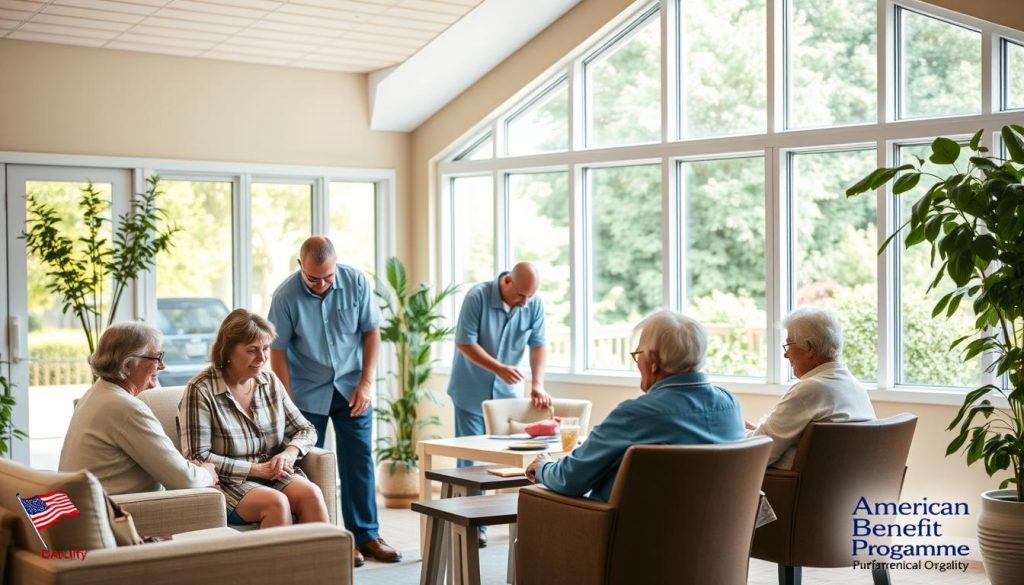
Utilizing Resources for Finding Memory Care Services
Finding good memory care services can be hard. Reliable resources make the search easier. They help find care that fits individual needs. The Alzheimer’s Association and local groups are big helps.
Alzheimer’s Association Community Resource Finder
The Alzheimer’s Association Community Resource Finder is very helpful. It makes finding the right services easier. People can find many places that meet high standards. This eases the stress of making a big decision.
Local and National Nonprofit Organizations
Many groups besides the Alzheimer’s Association offer help, too. They give out information and support. They help families understand their choices. They also connect families to health providers and help with unique challenges.
Using these resources gives families more confidence. The Alzheimer’s Association and local groups better the search. This leads to finding needed programs and services12.
Financial Considerations for Memory Care Services
It’s important to know the costs of memory care when planning for this big change. Many families find paying for memory care hard. They use money from savings, Social Security, and other places like stocks or retirement funds13.
Looking at home equity is common for families. They might sell or rent out their home. Or, they use reverse mortgages for extra money. Long-term care insurance is also an option, but what it covers can vary13.
Medicaid might help pay for some services, but it won’t cover living costs. This only works if families fit into certain programs13. The VA helps senior veterans with money for memory care, showing why it’s key to check all choices13.
Talking to financial experts or senior living advisors is smart. They can guide families to the best ways to pay for memory care services.
For those over 65, Medicare is the main health insurance. But, look at private insurance or work plans to save money14. Flexible spending accounts can also save about 20 to 30%. It’s crucial to explore all money sources for memory care costs14.
Visiting and Evaluating Memory Care Facilities
When families start looking at visiting memory care facilities, gathering info is key. They must ensure their loved ones get the best care. Evaluating these places might seem tough. Yet, the right questions help see what’s offered. A visit lets one spot quality care signs crucial for well-being.
Key Questions to Ask During Visits
Before choosing, families should ask some important questions:
- What specific training does the staff receive in dementia care?
- What is the staff-to-resident ratio?
- How does the facility handle difficult behaviors presented by residents?
- What emergency protocols are in place?
- How long has the facility been providing care for its residents?
- Are there hospice services available if needed?
- What initiatives are in place for resident well-being and adaptation to the facility environment?
Signs of Quality Care in a Facility
Spotting quality care signs during a visit is crucial. Families should notice:
- Engaged staff members who interact positively with residents.
- A clean and safe environment, including secured areas designed to prevent wandering.
- Availability of engaging activities, ensuring residents are active instead of just watching television.
- Transparent communication regarding care plans and family involvement.
- Regular monitoring and advocacy for residents’ needs by the staff.
- Accreditation and licensing, which indicate compliance with health standards and regulations.
Making a good choice on evaluating memory care services comes from seeing and asking. With over 6 million Americans facing Alzheimer’s, finding a top facility is key15.
Transitioning a Loved One to Memory Care Services
Moving to memory care is hard for caregivers and their family members. It’s key to know that feelings of worry and sadness might come up. Some elders with dementia do better in places made for dementia care16. Others might fit well in assisted living with memory care units. Talking well with the memory care staff can make this time easier for everyone.
Getting ready to move a family member is very important. Caregivers can help by caring for emotional needs and making the new place feel warm and personal. Hiding packing from the loved one can lower confusion and stress16. Also, setting up regular talks with family can help ease feelings of being lost16.
- Making a special space in the new home can calm nerves by comforting your family member.
- Getting them to join in activities can help them adjust after the move.
Studies tell us that keeping in touch with care staff after moving is key. It helps stay connected and makes sure the family member is well cared for16. Around 16 million Americans give free care to those with dementia. This shows the big stress on caregivers, with about half feeling very sad17. It’s just as important for caregivers to take care of themselves to be there for their family member well.
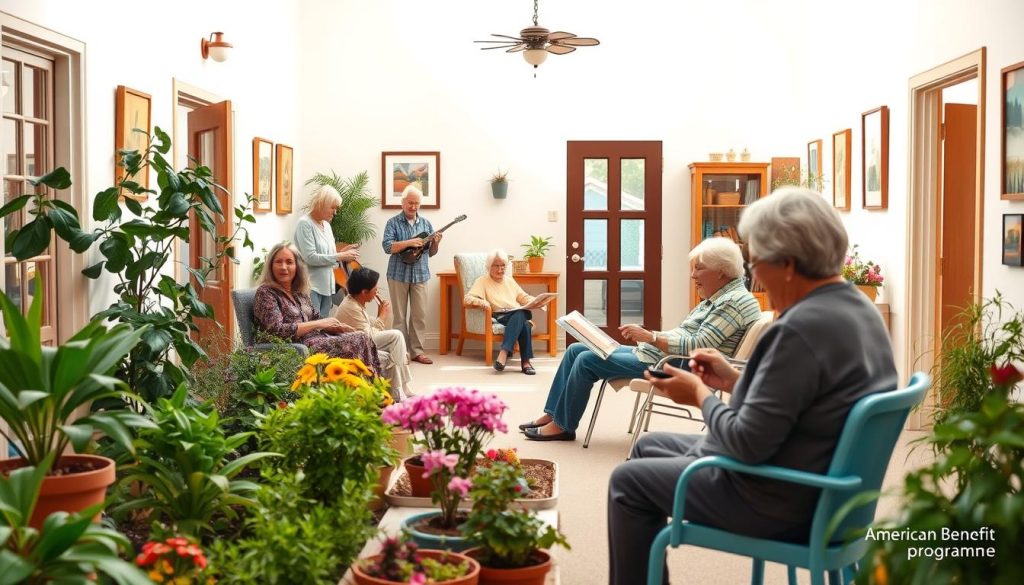
When going into memory care, having the staff involved is helpful. It builds trust and shares the family member’s story and likes, making moving in easier18. Caregivers should watch how their family member is doing to keep the connection strong and tackle any problems.
Moving to memory care needs careful planning and kindness. Knowing the emotional and practical parts of moving can help a lot. It makes the change better for the family member and their family.
Conclusion
Finding good memory care is key for families dealing with memory loss. As more people get older and diseases that affect the brain increase, we need more special support19. The text before talked about different care places, personal care, and choosing the best option carefully.
Studies show that people in memory care places have a lower chance of going to the hospital. They also have a better life20. This summary tells us families should act early. They need to use all help and information to make smart choices for their loved ones.
To make memory care easier, families must look for the best solutions. They must also keep supporting their loved ones and caregivers. Being up-to-date and involved really helps in caring for those with memory loss.
Source Links
- Finding Dementia Care and Local Services
- What to Expect in a Memory Care Facility | MemoryCare.com
- Nursing Home vs. Memory Care: What’s the Difference?
- What Is Dementia?
- What Is Dementia? Symptoms, Types, and Diagnosis
- Memory Care Certification for Assisted Living Communities
- Memory Care Options for Low-Income Seniors
- How McKendree Enhances Quality of Life Through Personalized Care
- Why Personalized Care Will Be Essential in Senior Living Communities by 2025
- What to Look for When Searching for a Memory Care Facility | StoneBridge Senior Living
- 10 Questions to Ask When Considering a Memory Care Community | Alzheimer’s Foundation of America
- Resources for Health Care Providers: Alzheimer’s and Related Dementias
- How to Pay for Memory Care: 6 Options for Families
- Paying for Care
- Choosing the Right Memory Care Service: A Step-by-Step Guide for Families
- How To Move a Parent With Dementia To Assisted Living
- 15 Tips on Transitioning a Loved One to Memory, Dementia, or Alzheimer’s Care
- Transitioning to Assisted Living with Dementia | Aegis Living
- Navigating the Journey of Memory Care: Innovations and Support Strategies for Dementia – St Elizabeth Community
- Memory care reduces nursing home admissions among assisted-living residents with dementia
